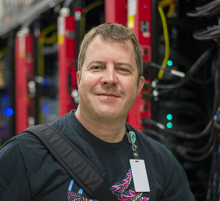computational-chemistry
There are no Mentorships associated with this topic. View All Mentorships.
Affinity Groups
There are no Affinity Groups associated with this topic. View All Affinity Groups.
Announcements
| Title | Date |
|---|---|
| Ookami Webinar | 02/14/24 |
| Open Call: Minisymposia for PASC24 | 10/05/23 |
Upcoming Events & Trainings
No events or trainings are currently scheduled.
Topics from Ask.CI
Knowledge Base Resources
There are no Resources associated with this topic. View All Resources.
People with Expertise
Thomas Cheatham
University of Utah
Programs
Campus Champions
Roles
mentor, research computing facilitator, domain champion

Expertise
Paul Rulis
University of Missouri-Kansas City
Programs
Campus Champions
Roles
researcher/educator, research computing facilitator

Expertise
Swabir Silayi
George Mason University
Programs
ACCESS CSSN, CCMNet, Campus Champions
Roles
mentor, research computing facilitator, cssn, Consultant, CCMNet

Expertise
People with Interest
Paul Rulis
University of Missouri-Kansas City
Programs
Campus Champions
Roles
researcher/educator, research computing facilitator

Interests
Shawn Sivy
The College of New Jersey
Programs
Campus Champions, CAREERS
Roles
research computing facilitator, ci systems engineer
Interests
Dung Vu
California State University-San Bernardino
Programs
ACCESS CSSN, Campus Champions
Roles
research computing facilitator, CIP
